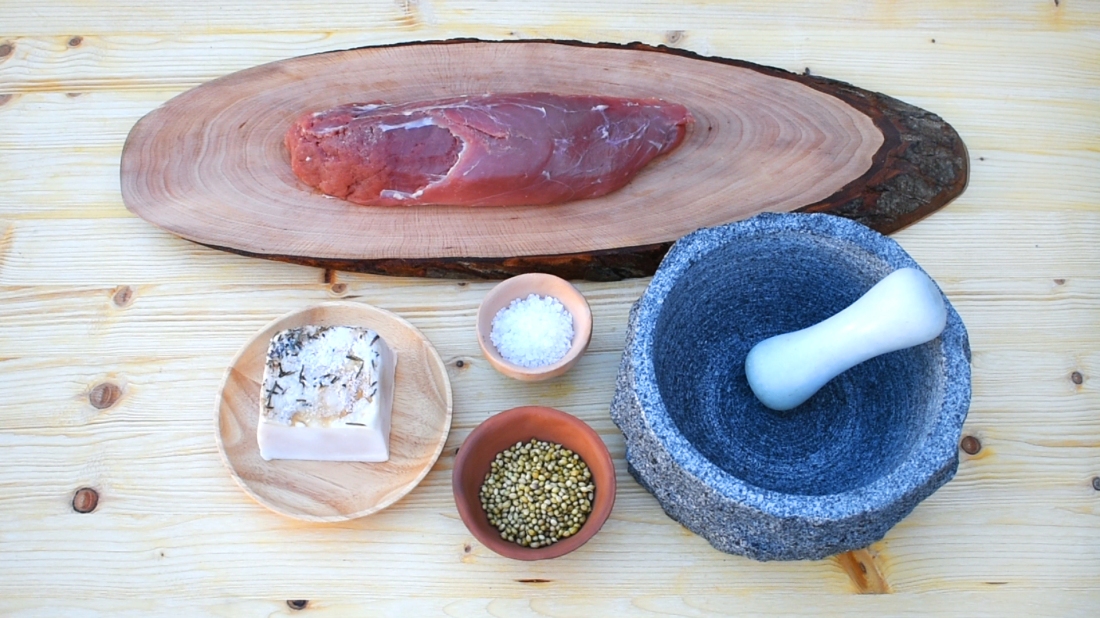Today we prepare Renaissance pork skewers, called coppiette in the original text. We selected this recipe from an amazing 15th-century cookbook, Libro de Arte Coquinaria (Book of Culinary Art) by Maestro Martino, the most famous Italian cook of the period. This book roots deeply in medieval cuisine but anticipates tendencies that will establish in the following centuries, the taste for simplicity and attention to cooking technique.
It is a delicious recipe, quick and easy to make. Below, you will find the original recipe and the translation. Enjoy your meal!
Ingredients
pork tenderloin
lardo
coriander seeds
coarse sea salt
Method
Grind in the mortar the coriander seeds, then the salt.
Cut the lardo into six thin slices, then the meat: the first time without reaching the end to make a pocket and then completing the cut. Now, sprinkle the coriander and salt into the opening and insert a slice of lardo, then close the pocket and dust with coriander and salt the outer parts.
Skewer and roast the tenderloin slices on charcoal turning them frequently.
When they are ready, remove them from the skewers and serve.
Note about the ingredients
Maestro Martino doesn’t specify the kind or the cut of meat. We chose pork tenderloin, but you can use the meat you prefer, for example, mutton, veal, or beef.
Lardo is cured pork fatback, frequently used in medieval and traditional Italian cooking. It is already salty, so we suggest not adding to much salt to the tenderloin.
The author writes that you can use either coriander or fennel seeds for this recipe.
Original recipe
Per fare coppiette al modo romano.
Taglia la carne in pezzi grossi como uno ovo, ma non la fornire di tagliare, perché li ditti pezzi deveno restare attaccati l’uno coll’altro; et togli un pocho de sale et de pitartema, cioè il seme di coriandri, o vero finocchio pesto, et inbrattane bene li ditti pezzi, et dapo’ poneli un pocho in sopprescia et coceli in lo speto arrosto mettendo in esso speto tra l’uno pezzo et l’altro una fettolina di lardo sottile per tenere le diete copiette più morbide.
Translation
To make coppiette in the Roman way.
Cut the meat into egg-sized pieces but do not complete the cut, because the pieces ought to stay attached to each other. Sprinkle the pieces with a little salt and either ground coriander or fennel seeds, press them a little, then spit them putting thin slices of lardo between the pieces of meat. In this way, the coppiette will be more tender.
Medieval and Renaissance Cuisine Playlist
Recipes
Renaissance Meatball Skewers VIDEO
Renaissance Crostini with Guanciale and Sage VIDEO


